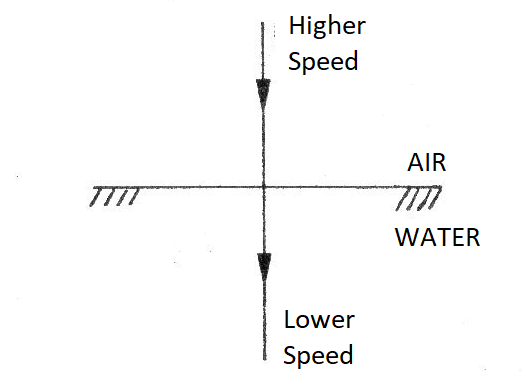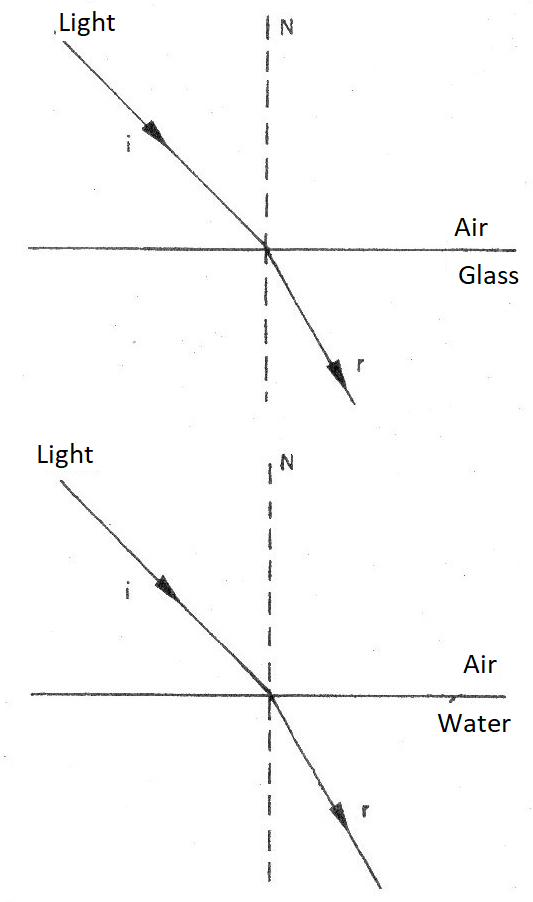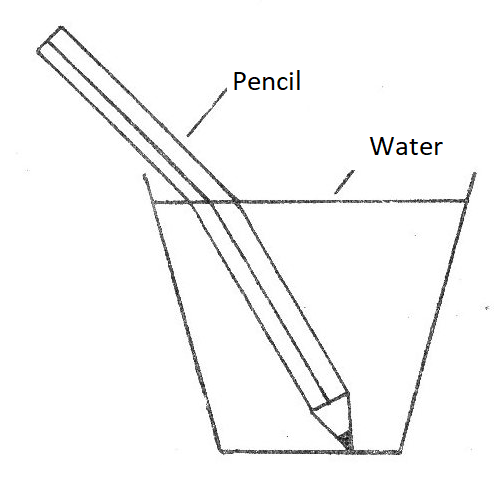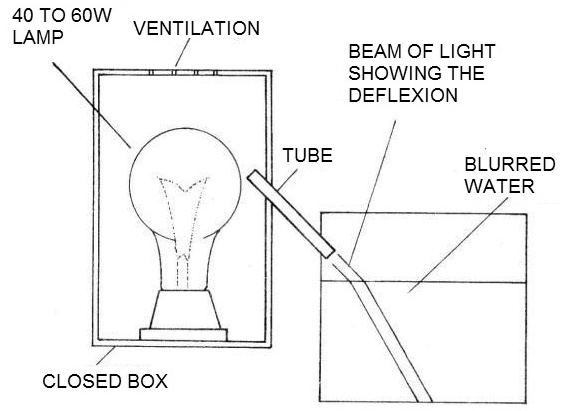Light is a form of electromagnetic radiation and as such is formed by "waves" which propagate at great speed. In vacuum, its speed is on the order of 300,000 kilometers per second, but in denser medium, such as water or glass (or any transparent material medium), this speed is slower. The result of this slower propagation causes light, when passing from one medium to another, modifies its trajectory.
If the light focuses vertically on the separation surface between two mediums, as shown in Figure 1, its trajectory does not change, but only the velocity of propagation.

However, if the light focuses on an inclined angle, a path deviation occurs, as shown in Figure 2.

This deviation is such that the angle regarding the vertical, called normal (N), is always greater in the medium where propagation occurs at a higher speed, that is, in the less dense medium. Thus, relative to glass and water, light “breaks down” as it strikes obliquely.
This is why when we put a pencil in a glass of water, it looks “broken,” as shown in Figure 3.

The Brazilian natives, who fish with a bow and arrow, trying to hit a fish, do not know physics or optics as we explain it, but they know exactly what the phenomenon is and use it to their advantage.
Since the direction in which the natives see the fish does not correspond to reality, because the rays of light from the image "breaks" as it moves from one medium to another, they does not aim at what they see. They "compensate" this difference very skillfully pointing just below the fish because they know which is its real position. If they "target" the exact spot the fish “is in”, they will never hit it!

At a science fair, you can demonstrate this effect of refraction with several types of makeshift “gadgets,” such as a glass of water and pencil, an illustrative drawing of the natives and the fish, and even a gadget, as shown in Figure 5.

Using a rectangular aquarium, you will fill it with cloudy water with any substance, such as lime, and focus the beam of light from a lamp on a box. The parallel beam of light will then be clearly deviated from its path, showing the refraction.



